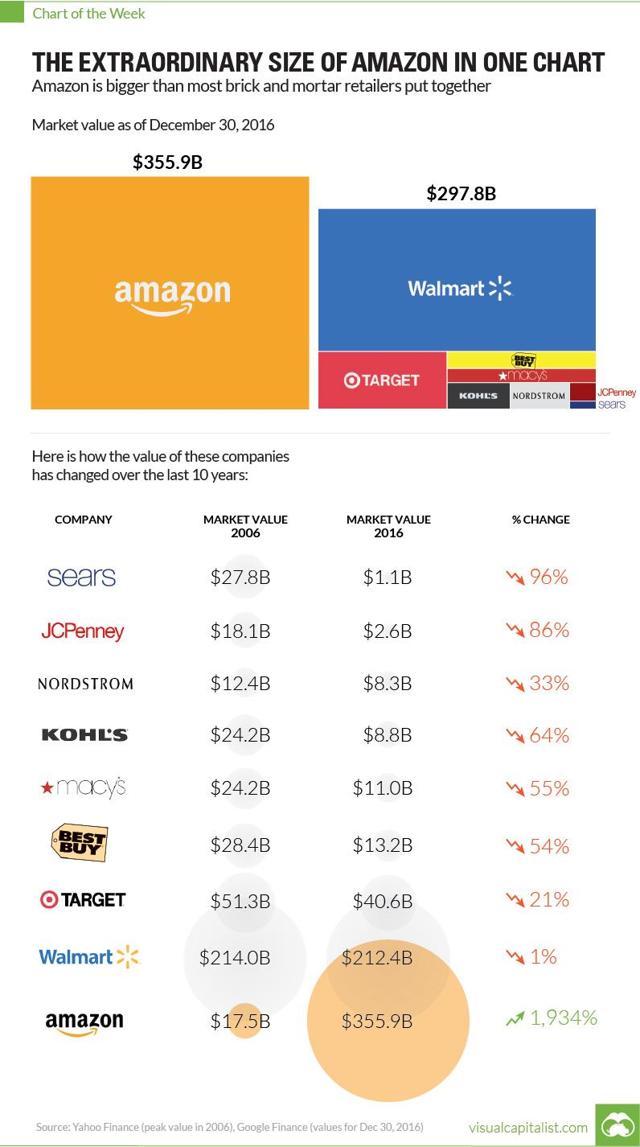
U.S. retailers continue to announce store closures, layoffs and even bankruptcy as they continue to struggle with declining sales and profitability. The list of companies recently announcing store closures, includes JC Penney, Macy’s, Sears, Kmart, American Apparel, Payless ShoeSource, CVS, Staples and Radio Shack, among many others.
What’s Driving the Closures
Three main factors are driving store retail closures. First, more and more consumers are opting for online shopping. Nothing illustrates this more than Amazon.com’s astronomical 1,934% growth in market value from $17.5 billion in 2006 to $355.9 billion in 2016, making it more valuable than Walmart, Target, Macy’s, Best Buy, Nordstrom, Kohl’s, Sears and Kmart combined, according to a chart by Yahoo!Finance. Second, there are simply too many brick and mortar outlets per capita. In fact, Business Insider reports that the United States has 23.5 square feet of retail space per person, compared to 16.4 square feet in Canada and 11.1 square feet in Australia, which rank second and third in terms of per capita retail space respectively. Third, consumers seem to be abandoning shopping malls and suburban retail locations in favor more boutique-type stores and new retailers such as H&M and Zara that are located in core urban areas/downtown locations. In fact, big box retailers now account for only 3% of the retail market, down from 10% just a few years ago, according to CNBC.
What Happens to Closed Stores
Retail locations are by no means disappearing. They are simply morphing into something different than what consumers have been accustomed to over the past few decades. Increasingly, retail stores are being occupied by more specialized economic activity such as gyms, restaurants, boutique stores and even retail distribution and fulfilment centers for online retailers.
